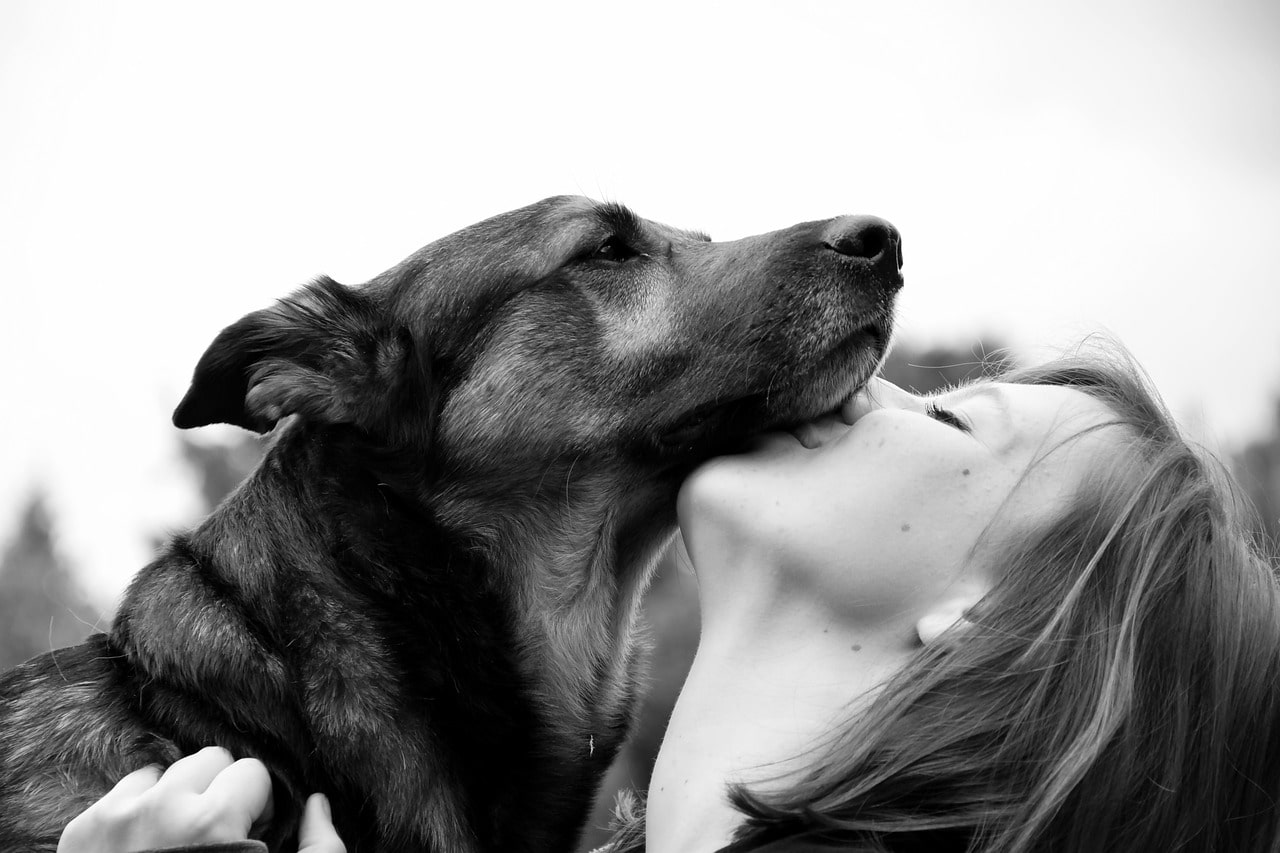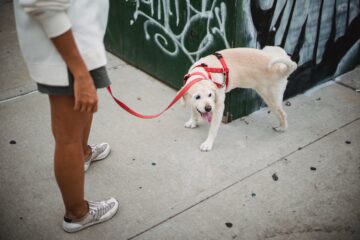Ensuring your dog is well-socialized with humans is a crucial aspect of responsible pet ownership.
A properly socialized dog tends to be more adaptable, friendly, and less prone to anxiety in various situations.
In this guide, we’ll explore practical tips and expert insights on how to socialize your dog with humans.
From understanding your dog’s temperament to implementing positive exposure, let’s embark on a journey to foster positive interactions and create a well-rounded and socially adept canine companion.
Table of Contents
How to Socialize Your Dog with Humans – A Comprehensive Guide

1] Early Exposure Matters: Start Socialization Early
Early socialization lays the foundation for a well-rounded canine companion.
Initiate this crucial process during the early stages of your dog’s life to build resilience and a positive attitude towards various stimuli.
Introduce them to diverse human interactions, environments, and scenarios.
Early exposure not only prevents fear or anxiety as they mature but also fosters adaptability, making your dog a confident and socially adept member of the community.
2] Gradual Exposure is Key: Incremental Steps for Comfort
Imagine socialization as a carefully choreographed dance.
Gradual exposure is the gentle waltz that prevents missteps and ensures comfort.
Begin in quieter settings and incrementally progress to busier areas.
This step-by-step approach allows your dog to adjust at their own pace, building confidence with each encounter.
It’s like guiding your dog through a social ballet, ensuring a graceful and positive experience.
• Socialization is like a carefully choreographed dance • Gradual exposure is the gentle waltz for comfort • Start in quieter settings, progress to busier areas • Step-by-step approach allows your dog to adjust at their own pace
3] Positive Reinforcement: Create Pleasant Associations
Positive reinforcement transforms social interactions into a delightful experience for your dog.
Use treats, praise, and affection strategically during introductions to associate meeting new people with positive outcomes.
This creates a positive emotional response, encouraging your dog to view social encounters as enjoyable and rewarding.
By reinforcing positive associations, you’re shaping a dog that actively seeks and embraces social interactions.
4] Basic Commands Build Confidence: Teach Commands Early
Basic commands are the building blocks of a confident and well-mannered dog.
Teach commands like “sit” and “stay” early on to enhance control during social interactions.
A dog that responds to commands not only impresses those they meet but also feels secure in knowing how to navigate various situations.
It’s akin to giving your dog a language to express themselves confidently in the social symphony.
Basic commands provide a sense of security for your dog, promoting positive interactions with humans
5] Reward Based Training: Reinforce Social Skills Consistently
Social skills are honed through consistent reward based training.
Reinforce calm and friendly behavior consistently during social interactions.
This reinforcement not only solidifies positive social skills but also establishes you as the bearer of rewards, strengthening the bond between you and your dog.
Think of it as creating a social currency where good behavior earns your dog a wealth of positive experiences.
6] Frequent Outings Boost Exposure: Explore Public Spaces
Turn outings into a series of adventures that boost social exposure. Visit parks, markets, and various public spaces frequently.
Each outing provides an opportunity for diverse social interactions, exposing your dog to different people, smells, and environments.
These adventures contribute to a well-rounded and socially confident canine companion, ready to navigate the world with ease.
7] Structured Classes: Professional Guidance for Socialization
Enroll your dog in structured socialization classes led by professional trainers.
These classes offer controlled environments, expert guidance, and positive reinforcement.
Professional insight ensures that socialization is approached in a structured and effective manner, addressing specific challenges and fostering positive interactions.
It’s like enrolling your dog in a social university, where they learn valuable skills under the guidance of experienced instructors.
In structured classes, dogs learn social skills with professional guidance—where tails wag, and friendships bloom
8] Controlled Introductions with Family and Friends
Create a positive social foundation by orchestrating controlled introductions to family and friends.
Begin with familiar faces to build trust before expanding the circle.
This gradual approach allows your dog to associate social interactions with positive experiences, making future encounters more enjoyable.
Controlled introductions set the stage for a lifetime of harmonious relationships.
9] Watch Body Language: Understand Canine Cues
Mastering the art of canine communication involves becoming fluent in your dog’s body language.
Pay close attention during social interactions to interpret their cues.
Understanding these subtle signals allows you to gauge their comfort level and intervene if needed.
It’s like having a secret language with your dog, ensuring that every social encounter is based on mutual understanding and respect.
10] Positive Exposure to Children: Teach Acceptance Early
Foster positive relationships between your dog and children by providing early exposure.
Supervised interactions with children teach acceptance and prevent fear or anxiety.
Positive exposure creates a foundation for a gentle and tolerant attitude towards little ones.
It’s like nurturing a bond that grows alongside your dog, ensuring that they view children as friends rather than sources of stress.
• Foster positive relationships with children • Provide supervised interactions for acceptance • Prevent fear or anxiety through early exposure • Create a foundation for a gentle and tolerant attitude
11] Patience with Shy Dogs: Allow Gradual Progress
Shy dogs require an extra dose of patience during the socialization journey.
Allow for gradual progress, respecting their comfort zone.
Pushing too hard can create stress, so proceed at a pace that is comfortable for your furry friend.
Patience becomes the guiding light, allowing shy dogs to blossom socially at their own pace.
12] Consistency is Crucial: Maintain Regular Socialization
Consistency is the heartbeat of successful socialization.
Regular exposure to diverse situations ensures that positive behaviors are reinforced over time.
Consistency creates a routine that becomes second nature for your dog, fostering a confident and socially adept demeanor.
It’s like weaving socialization into the fabric of your daily life, ensuring that your dog remains a socially skilled and adaptable companion.
How to Socialize Your Dog with Humans: FAQs
Can all dogs be socialized with humans?
Yes, with proper training and socialization efforts, most dogs can become comfortable and well-mannered around humans. However, individual temperament and past experiences may influence the ease of socialization.
What if my dog shows fear or anxiety around humans?
If your dog displays fear or anxiety, take a step back and proceed with gradual exposure. Consult with a professional dog trainer if issues persist, as they can provide tailored strategies for your dog’s specific needs.
How long does it take to socialize a dog with humans?
The duration varies based on factors such as the dog’s age, temperament, and past experiences. Consistent efforts over several weeks to months are typically needed for successful socialization.
Is socialization important for adult dogs?
Yes, socialization is crucial for adult dogs as well. While puppies are more adaptable, adult dogs can still learn and adapt through positive exposure and reinforcement.
Can older dogs learn socialization skills?
Absolutely! Older dogs can learn socialization skills with patience and consistent training efforts. Tailor your approach to the individual needs and experiences of your older dog.
How can I help my dog overcome shyness around new people?
Should I intervene if my dog shows signs of discomfort during socialization?
Yes, intervene if your dog shows signs of discomfort, such as trembling or cowering. Remove them from the situation and gradually reintroduce them in a more controlled manner.
Can I socialize my dog with other pets alongside human socialization?
Yes, simultaneous socialization with other pets and humans is beneficial. Ensure controlled interactions to prevent overwhelming your dog and foster positive associations with both.
Is it normal for my dog to be reserved around strangers?
Some dogs may naturally be reserved around strangers. Respect your dog’s comfort level, but continue positive socialization efforts to help them become more at ease over time.
What role do treats play in socialization training?
Treats serve as positive reinforcement, rewarding your dog for desirable behavior during socialization. Choose treats your dog loves to create strong associations with positive interactions.
Can professional trainers help with specific socialization challenges?
Yes, professional trainers can offer personalized strategies for specific socialization challenges. Their expertise ensures a tailored approach to address your dog’s unique needs and behaviors.
How can I socialize my dog with children effectively?
Socialize your dog with children by supervising positive interactions, teaching children to approach calmly, and rewarding your dog for gentle behavior. Gradual exposure helps build a positive association with kids.

Conclusion:
The process of socializing your dog with humans is a rewarding investment in their overall well-being.
By following the expert strategies outlined in “How to Socialize Your Dog with Humans,” you’ll pave the way for a well-mannered and sociable canine companion.
Keep in mind that every dog is unique, so adapt these strategies to suit your furry friend’s personality and pace.
With consistent effort, patience, and positive reinforcement, you can nurture a socially well-adjusted dog that brings joy and companionship to both your family and the wider community.





